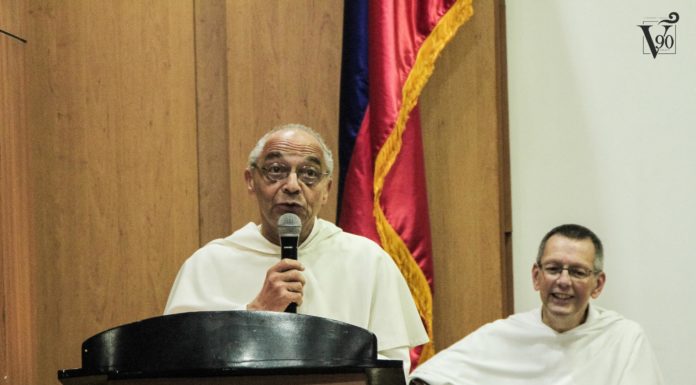
THE UNIVERSITY will not yet increase classroom capacity for limited face-to-face (F2F) classes to 100 percent despite the government’s amended Alert Level 1 guidelines allowing classrooms to be fully occupied.
The Inter-Agency Task Force (IATF) on Emerging Infectious Diseases, in IATF Resolution No. 164, increased the allowable seating capacity in classrooms of higher educational institutions (HEIs) in areas under Alert Level 1 to a maximum of 100-percent capacity.
UST Vice Rector for Academic Affairs Prof. Cheryl Peralta said the University would retain its guidelines on limited F2F classes to ensure the safety of students.
“We will maintain cohort schedules for limited F2F classes in order to ensure physical distancing as we gradually expand the implementation to other programs,” Peralta told the Varsitarian.
“The University shall take all steps necessary to ensure the safety of our stakeholders in the conduct of in-person classes,” she added.
The cohort schedule is the batch system followed by academic units in conducting F2F classes, in which students are divided into groups that shuffle between in-person and online classes to prevent crowding inside classrooms.
In a memorandum dated March 1, the Office of the Secretary General said UST would continue its expansion of limited F2F classes to more programs subject to the approval of the University Crisis Management Committee.
UST is already conducting limited F2F classes for select courses in the Faculty of Medicine and Surgery, College of Rehabilitation Sciences, College of Nursing, and College of Science. The College of Tourism and Hospitality Management will begin limited in-person classes on April 18.
Meanwhile, the Faculty of Arts and Letters is preparing to apply for F2F classes for journalism students who will take broadcast journalism and photojournalism courses in Academic Year 2022-2023, Artlets Dean Marilu Madrunio told the Varsitarian on March 4.
Metro Manila is under Alert Level 1, the most lenient in the country’s alert level system, until March 31.
‘Too shambolic’ and risky
Microbiology professor Miguel Carlos Arada said he preferred limited capacity classrooms in limited F2F classes as increasing the allowed capacity to 100 percent could be “too shambolic.”
“I prefer to continue imposing capacity limits as this pandemic still continues to affect everyone, and implementation of full capacity is far too shambolic. After all, we already explored, invested and experienced online teaching. Maybe we can blend and do some modifications about these teaching strategies and come up with a better plan,” Arada told the Varsitarian.
Bea Limson, a medical technology senior, also believed that classroom capacity limits should be retained.
“I think that it is better to retain the capacity limit in the institution for the safety of all because not everyone has their own condo units or dorms where they could stay as the physical classes start. There’s still a risk of contraction of the virus outside the school premises, especially to the commuters,” Limson said.
A full classroom also raises doubts and virus contraction concerns for communication instructor Tito Quiling Jr.
“Given the intermittent surge and outbreaks, academic staff and students need to be more settled with the University’s preparation. […] Returning to a full classroom may not happen right away as with other institutions, but it seems more ideal to have a capacity limit given the gradual change, and also considering that not every student is living in Metro Manila,” Quiling said.
Participants of the F2F classes are required to be fully vaccinated. Flexible learning modalities are available for partially vaccinated or unvaccinated students.
The IATF requires HEIs to ensure that students participating in F2F classes have medical insurance policies that cover medical expenses related to Covid-19.
According to IATF Resolution No. 164, HEIs have the autonomy to choose which learning modalities they would operationalize, as long as there would be continuity of learning under any flexible learning modality subject to the condition that the HEIs may require.
Student dormitories will be allowed to operate without restrictions.
Before restarting F2F classes under Alert Level 1, HEIs are required to take the self-assessment checklist under Joint Memorandum Circular 004-2021 of the Commission on Higher Education and the Department of Health. with reports from Samantha Nichole G. Magbuhat
















